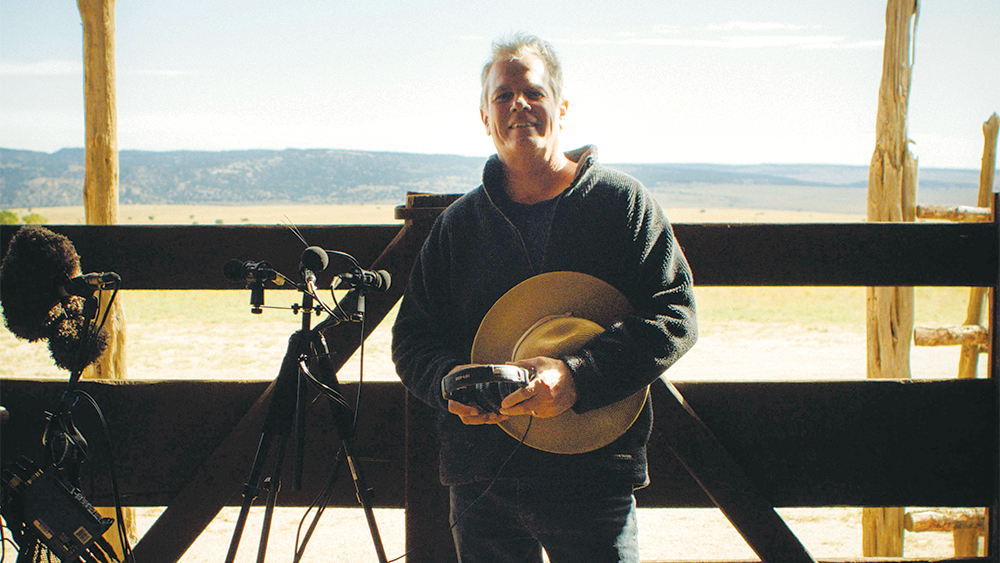Pros Explain Intricacies of Emmy Sound Categories
By Debra Kaufman
LOS ANGELES (Variety.com) – At first glance, nine types of Emmy Awards for sound seems a bewilderingly large number. To enlighten the confused, TV sound professionals are eager to shed light on the differences between sound editing and sound mixing — two separate peer groups in the Academy of Television Arts & Sciences — as well as the genres within each category.
The sound editor, explains Wylie Stateman, nominated as co-supervising editor for “Godless,” is primarily responsible for organizing, synchronizing and clarifying the soundtrack. “First and primary responsibility is with dialogue, from production through completion and delivery,” he says.
Stateman, who did most of his work for the Netflix show at Light Iron in New York, further notes: “We need to add the sounds of the environment and take out inappropriate ones, and synchronize them all successfully. The goal is to not obscure the dialogue, and to sound like everything is in the right acoustical space.” Sound editing relies on a big team of supervisors, sound editors, music and effects editors, foley artists and ADR mixers.
The other category, sound mixing, is a two-part process, says USC School of Cinematic Arts sound-editing professor Midge Costin. The production mixer works on the set or on location, and the re-recording mixer puts all the final elements together. “They’re two people who probably never see each other in their careers,” Costin says.
Production sound mixer Phillip W. Palmer explains his role on the set as gathering the initial elements and “creating a mix” to edit as “a guide for the re-record.”
Then, says re-recording mixer Tom Fleisch-man (nominated for “Fahrenheit 451,” mixed at Soundtrack Film & Television), his craft constitutes the final process before the show is released. It’s “where everything comes together,” he explains. “Sometimes it’s very challenging, depending on how the sound was originally recorded. Most of the hard work is on dialogue; the fun work is with music and sound effects.”
The Emmys further parse sound editing and sound mixing by length of show (half-hour or hourlong) and genre (limited series, movie or special; nonfiction; variety).
Stateman notes that projects of different length have different demands. “It’s a ballad versus a haiku,” he says. “The structure of a half-hour show has to be bang-bang-bang, whereas if you have an hour, you can go into a more leisurely rendition or display of the story.” Costin notes that the different types of shows all have different budgets and time frames. “And they all work in different environments,” he adds, “from quiet studios to on location.”
For members of each peer group, who both nominate programs and vote for the nominees, judging can be challenging. “The daunting part is the sheer volume of the shows,” says re-recording mixer Elmo Ponsdomenech, who is nominated with re-recording mixer Todd Beckett for “Silicon Valley” and “Barry,” mixed at Sony Pictures Studios. “Pretty much anybody who works on a TV show submits something for nomination, so some categories have 30 to 50 entries, and that adds up to a lot of viewing. At the voting stage, there are only three to five nominations, so it’s not as difficult.”
What do the judges listen for? “The skills we use are very similar from one type of program to another, although there’s a difference in style of mixing for a reality show versus a film-type show,” says Ponsdomenech. “But you’re trying to accomplish the same thing: to tell a story with clarity.”
Fleischman, too, emphasizes the storytelling aspect of the sound mix. “If anything is missing or out of place, you take the audience right out of the experience,” he says. “My greatest successes are when my work is not recognized because it’s seamless and transparent.”
Stateman says he considers audience playback on smaller screens with less robust audio. “We model the sound for every format to make sure the dialogue is clean and intelligible even with the limited sonic experience of listening with earbuds or a speaker in the hinge of your laptop,” he notes. “We have to take into account the viewer’s experience.”
For Stateman, who worked alongside co-supervising editor Eric Hoehn, the Emmys are an opportunity for a team to be recognized in many categories. “It’s very inclusive,” he says. “It’s an acknowledgment about these individuals who collectively performed their art at the highest levels.”

